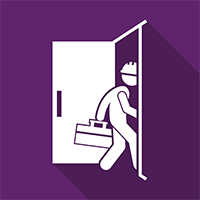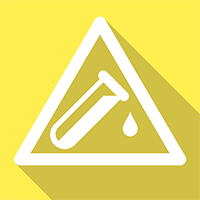-
 This online Workplace Health and Safety E-Learning course covers general health and safety issues that apply to a wide range of types of businesses and sectors, from office and retail environments to workshops and factories. The wide range of topics covered makes this a great course to act as an introduction to health and safety in the workplace that can then be built on with more detailed courses that cover specific hazards that employees might come into contact with in specific workplaces. This makes it a useful part of the induction process. By the end of this Workplace Health and Safety E-Learning course the candidate will have an understanding of health and safety legislation and definitions of common terms associated with health and safety. This is followed up with some statistics outlining the most common causes of accidents in the workplace. They will also understand good practice in relation to electricity, display screen equipment and the use of safe manual handling techniques. The course also introduces best practice associated with the control of substances hazardous to health regulations, the importance of using appropriate PPE as instructed and the most common procedures to follow in the event of a fire. The Workplace Health and Safety online course contains specific case studies that outline the seriousness of health and safety in the workplace and potential consequences if there is a health and safety breach. Along with all this it introduces the concept of risk assessment and concludes with the actions that should be taken in the event of an emergency situation occurring.
This online Workplace Health and Safety E-Learning course covers general health and safety issues that apply to a wide range of types of businesses and sectors, from office and retail environments to workshops and factories. The wide range of topics covered makes this a great course to act as an introduction to health and safety in the workplace that can then be built on with more detailed courses that cover specific hazards that employees might come into contact with in specific workplaces. This makes it a useful part of the induction process. By the end of this Workplace Health and Safety E-Learning course the candidate will have an understanding of health and safety legislation and definitions of common terms associated with health and safety. This is followed up with some statistics outlining the most common causes of accidents in the workplace. They will also understand good practice in relation to electricity, display screen equipment and the use of safe manual handling techniques. The course also introduces best practice associated with the control of substances hazardous to health regulations, the importance of using appropriate PPE as instructed and the most common procedures to follow in the event of a fire. The Workplace Health and Safety online course contains specific case studies that outline the seriousness of health and safety in the workplace and potential consequences if there is a health and safety breach. Along with all this it introduces the concept of risk assessment and concludes with the actions that should be taken in the event of an emergency situation occurring. -
 Intelligence indicates that further terrorist attacks in our country are ‘highly likely’. Experience tells us that the threat comes not just from foreign nationals but from terrorists born and bred in Britain. Therefore, it is vital that our counter-terrorism strategy contains a plan to prevent radicalisation and stop would-be terrorists from committing mass murder. The Prevent strategy, published by the Government is part of the overall counter-terrorism strategy. This online Prevent Duty E-Learning Course starts with an overview of the Government’s Prevent strategy, and then looks at some of the reasons people become extremists. The Prevent Duty Online Course goes on to cover the objectives of the Prevent strategy, how to base your actions on a risk-based approach, what to do if you are concerned and much more. Introduction to the Course What is Prevent? Prevent Objectives Delivering Prevent with a Risk-Based Approach Extremism, Radicalisation and Terrorism What Should You Do If You Are Concerned? The Channel Process British Values Approved by CPD - Duration 65 mins*
Intelligence indicates that further terrorist attacks in our country are ‘highly likely’. Experience tells us that the threat comes not just from foreign nationals but from terrorists born and bred in Britain. Therefore, it is vital that our counter-terrorism strategy contains a plan to prevent radicalisation and stop would-be terrorists from committing mass murder. The Prevent strategy, published by the Government is part of the overall counter-terrorism strategy. This online Prevent Duty E-Learning Course starts with an overview of the Government’s Prevent strategy, and then looks at some of the reasons people become extremists. The Prevent Duty Online Course goes on to cover the objectives of the Prevent strategy, how to base your actions on a risk-based approach, what to do if you are concerned and much more. Introduction to the Course What is Prevent? Prevent Objectives Delivering Prevent with a Risk-Based Approach Extremism, Radicalisation and Terrorism What Should You Do If You Are Concerned? The Channel Process British Values Approved by CPD - Duration 65 mins* -
 Around 17,000 people in the UK suffer deafness, ringing in the ears or other ear conditions caused by excessive noise at work. However, this damage is preventable if the right steps are taken but once your hearing has gone it will not come back. This Noise Awareness online course starts by going into detail about how dangerous noise can be in the workplace, and the main safety issues you should be aware of. The online Noise Awareness E-Learning course will take you through some of the simple science, the main laws that apply and introduce you to noise level limits. The Noise Awareness E-Learning course also covers some of the specific health risks and how to avoid them by producing risk assessments, action plans and providing appropriate Personal Protective Equipment. The online Noise Awareness course will conclude by examining how to provide information and instructions to employees, along with the most professional way to conduct workforce health surveillance. One of the key points this Noise Awareness online course is intended to teach is why it is so important to undertake and action points outlined in a noise risk assessment. This may include the use of PPE, limiting how long workers are exposed to noise or a number of other control measures that must be understood and followed. Understanding the risks and why controls are in place will mean workers are much more likely to consistently adhere to them. Noise in the Workplace Legislation Health Risks Action Plans Prioritising Controls Personal Protective Equipment Information and Health Surveillance Approved by IIRSM & CPD - Duration 55 mins*
Around 17,000 people in the UK suffer deafness, ringing in the ears or other ear conditions caused by excessive noise at work. However, this damage is preventable if the right steps are taken but once your hearing has gone it will not come back. This Noise Awareness online course starts by going into detail about how dangerous noise can be in the workplace, and the main safety issues you should be aware of. The online Noise Awareness E-Learning course will take you through some of the simple science, the main laws that apply and introduce you to noise level limits. The Noise Awareness E-Learning course also covers some of the specific health risks and how to avoid them by producing risk assessments, action plans and providing appropriate Personal Protective Equipment. The online Noise Awareness course will conclude by examining how to provide information and instructions to employees, along with the most professional way to conduct workforce health surveillance. One of the key points this Noise Awareness online course is intended to teach is why it is so important to undertake and action points outlined in a noise risk assessment. This may include the use of PPE, limiting how long workers are exposed to noise or a number of other control measures that must be understood and followed. Understanding the risks and why controls are in place will mean workers are much more likely to consistently adhere to them. Noise in the Workplace Legislation Health Risks Action Plans Prioritising Controls Personal Protective Equipment Information and Health Surveillance Approved by IIRSM & CPD - Duration 55 mins* -
 The alcohol licensing laws of the United Kingdom regulate the sale and consumption of alcohol. It is important for anyone working in licensed premises to have a basic understanding of these laws and how they apply to them. This online Licensed Premises Staff Training E-Learning course starts with an overview of UK alcohol licensing laws and the importance of the four key licensing objectives. The Licensed Premises Staff Training online course will also discuss mandatory conditions, which are compulsory for all licensed premises and looks in detail at the major issue of age verification. Finally, the Licensed Premises Staff Training online course outlines the responsibilities involved in alcohol retailing, including drinking guidelines and how to avoid and reduce conflict. This Licensed Premises Staff Training E-Learning course is aimed at anyone working in licensed premises. This Licensed Premises Staff Training online course could be included as part of the induction process or used to further enhance existing staff’s understanding of their responsibilities.
The alcohol licensing laws of the United Kingdom regulate the sale and consumption of alcohol. It is important for anyone working in licensed premises to have a basic understanding of these laws and how they apply to them. This online Licensed Premises Staff Training E-Learning course starts with an overview of UK alcohol licensing laws and the importance of the four key licensing objectives. The Licensed Premises Staff Training online course will also discuss mandatory conditions, which are compulsory for all licensed premises and looks in detail at the major issue of age verification. Finally, the Licensed Premises Staff Training online course outlines the responsibilities involved in alcohol retailing, including drinking guidelines and how to avoid and reduce conflict. This Licensed Premises Staff Training E-Learning course is aimed at anyone working in licensed premises. This Licensed Premises Staff Training online course could be included as part of the induction process or used to further enhance existing staff’s understanding of their responsibilities.Licensed Premises Staff Training Modules
Introduction Premises Licences Personal Licences and Club Premises Certificates Dealing With Licensing Authorities Types of Businesses Selling Alcohol Representations and Mandatory Conditions Licensing Authority Powers Children and Under 18s Responsibility in Alcohol Retailing Approved by CPD & Institute of Hospitality - Duration 60 mins* -
 Every day, thousands of people are exposed to situations where they are left alone in work premises, when visiting members of the public during their working day, or working from home. There are many risks associated with working in isolation, without the support of colleagues. These risks can include accidents and violence. This online Introduction to Personal Safety for Lone Workers course acts as an introduction to personal safety for lone workers and applies to those that work alone within business premises, mobile workers and homeworkers. This Introduction to Personal Safety for Lone Workers online course covers the legal responsibilities of both employers and employees, some of the common security precautions that can be implemented, practical steps you can take to avoid conflict in lone worker situations and other elements that can contribute to lone worker safety.
Every day, thousands of people are exposed to situations where they are left alone in work premises, when visiting members of the public during their working day, or working from home. There are many risks associated with working in isolation, without the support of colleagues. These risks can include accidents and violence. This online Introduction to Personal Safety for Lone Workers course acts as an introduction to personal safety for lone workers and applies to those that work alone within business premises, mobile workers and homeworkers. This Introduction to Personal Safety for Lone Workers online course covers the legal responsibilities of both employers and employees, some of the common security precautions that can be implemented, practical steps you can take to avoid conflict in lone worker situations and other elements that can contribute to lone worker safety.Introduction to Personal Safety for Lone Workers Modules
Lone Worker Personal Safety: The Basics The Law: Responsibilities Assessing the Risks Personal Safety Solutions Practical Tips to Avoid Conflict Reporting and Recording Incidents Approved by IIRSM & IOSH - Duration 45 mins* -
 The Health and Safety (Display Screen Equipment) Regulations contain special directives covering DSE safety. Both employers and employee‐users have responsibilities under the legislation So what do we mean by display screen equipment? The first thing most people think of is a computer monitor. But that’s not the only thing it refers to display screen equipment could also mean laptops, tablet PCs, televisions, smartphones, CNC control pads, portable diagnostic screens or equipment containing cathode ray tubes, or CRTs. Our Display Screen Equipment Awareness E-Learning course is aimed at users of display screen equipment (DSE) and those responsible for assessing display screen equipment. A ‘user’ is anyone who regularly uses display screen equipment for a significant part of their normal work. In practice, if you use display screen equipment continuously for more than one hour a day, then you’re a ‘user’. This Online Display Screen Equipment Awareness E-Learning course fulfils your statutory training obligations and covers, among other things; the correct way to set up and use your display screen equipment safely. Reducing the risk of work related conditions.
The Health and Safety (Display Screen Equipment) Regulations contain special directives covering DSE safety. Both employers and employee‐users have responsibilities under the legislation So what do we mean by display screen equipment? The first thing most people think of is a computer monitor. But that’s not the only thing it refers to display screen equipment could also mean laptops, tablet PCs, televisions, smartphones, CNC control pads, portable diagnostic screens or equipment containing cathode ray tubes, or CRTs. Our Display Screen Equipment Awareness E-Learning course is aimed at users of display screen equipment (DSE) and those responsible for assessing display screen equipment. A ‘user’ is anyone who regularly uses display screen equipment for a significant part of their normal work. In practice, if you use display screen equipment continuously for more than one hour a day, then you’re a ‘user’. This Online Display Screen Equipment Awareness E-Learning course fulfils your statutory training obligations and covers, among other things; the correct way to set up and use your display screen equipment safely. Reducing the risk of work related conditions.Display Screen Equipment Awareness Modules
Introduction Legislation Protecting Your Body Adjusting Your Chair Adjusting Your Screen Work Arrangements Adjusting the Layout of Your Workstation Adjusting Your Work Environment Approved by IIRSM & CPD - Duration 50 mins* -
 This course covers what you need to know about the Control of Substances Hazardous to Health (COSHH) So what do we mean by ‘Substances Hazardous to Health’? In legal terms, these are substances that are classified as “very toxic, toxic, harmful, corrosive or Irritant” under the Classification, Labelling and Packaging Regulation (CLP). This was a new regulation that came into force in January 2009 dovetailing with a set of regulations called REACH. REACH is a European Union regulation concerning the Registration, Evaluation, Authorisation and Restriction of Chemicals, which came into force on 1st June 2007. One of the main aims of REACH is to provide a high level of protection for human health and the environment from the use of chemicals. This Online Control of Substances Hazardous to Health (COSHH) course is aimed at anyone exposed to Substances Hazardous to Health at work and line managers with responsibility for such people. This Online Control of Substances Hazardous to Health (COSHH) E-Learning course will provide candidates with an understanding of substances that cause hazards to health in their work life and guidance on exposure, legislation and risk assessment.
This course covers what you need to know about the Control of Substances Hazardous to Health (COSHH) So what do we mean by ‘Substances Hazardous to Health’? In legal terms, these are substances that are classified as “very toxic, toxic, harmful, corrosive or Irritant” under the Classification, Labelling and Packaging Regulation (CLP). This was a new regulation that came into force in January 2009 dovetailing with a set of regulations called REACH. REACH is a European Union regulation concerning the Registration, Evaluation, Authorisation and Restriction of Chemicals, which came into force on 1st June 2007. One of the main aims of REACH is to provide a high level of protection for human health and the environment from the use of chemicals. This Online Control of Substances Hazardous to Health (COSHH) course is aimed at anyone exposed to Substances Hazardous to Health at work and line managers with responsibility for such people. This Online Control of Substances Hazardous to Health (COSHH) E-Learning course will provide candidates with an understanding of substances that cause hazards to health in their work life and guidance on exposure, legislation and risk assessment.Control of Substances Hazardous to Health (COSHH) Modules
Introducing COSHH Different Types of Hazard Different Types of Exposure Regulations and Approved Labelling Assessing COSHH Risks The Risk Assessment in Practice Exposure Control Staying in Control Training and Emergency Planning Course Summary Approved by IIRSM & Institute of Hospitality - Duration 125 mins* -
 Mental Health First Aid teaches participants how to notice and support individuals who may be experiencing mental health issues or exhibiting the signs of substance use in a work environment. They are also taught how to connect those people with appropriate help from fellow employees, community resources or healthcare professionals. Around 25 per cent of the UK population will experience a mental health problem at some point in their lives. Most are mild, tend to be short-term and are usually treated successfully with therapy and medication. But it is still a significant problem. Mental Health First Aid teaches participants how to notice and support individuals who may be experiencing mental health issues or exhibiting the signs of substance use in a work environment. They are also taught how to connect those people with appropriate help from fellow employees, community resources or healthcare professionals. The course introduces the subject and outlines the benefits of Mental Health first aid and workplace wellness schemes. It then goes on to cover the effects of stress on individuals and teams and discusses how stress and mental health are linked. It then covers the roles of employers, managers and employees in ensuring that a Mental Health First Aid programme is successful. It concludes with a series of practical examples of how to apply mental health first aid to real situations, how to support employees who are experiencing mental health issues and where to point them for further help and advice. Approved by Gatehouse Awards – Duration 90 mins*
Mental Health First Aid teaches participants how to notice and support individuals who may be experiencing mental health issues or exhibiting the signs of substance use in a work environment. They are also taught how to connect those people with appropriate help from fellow employees, community resources or healthcare professionals. Around 25 per cent of the UK population will experience a mental health problem at some point in their lives. Most are mild, tend to be short-term and are usually treated successfully with therapy and medication. But it is still a significant problem. Mental Health First Aid teaches participants how to notice and support individuals who may be experiencing mental health issues or exhibiting the signs of substance use in a work environment. They are also taught how to connect those people with appropriate help from fellow employees, community resources or healthcare professionals. The course introduces the subject and outlines the benefits of Mental Health first aid and workplace wellness schemes. It then goes on to cover the effects of stress on individuals and teams and discusses how stress and mental health are linked. It then covers the roles of employers, managers and employees in ensuring that a Mental Health First Aid programme is successful. It concludes with a series of practical examples of how to apply mental health first aid to real situations, how to support employees who are experiencing mental health issues and where to point them for further help and advice. Approved by Gatehouse Awards – Duration 90 mins* -
 This online course covers a range of important topics related to mental health conditions that children and young people can experience and the many ways they can be offered support. The Children and Young People’s Mental Health course starts by defining mental illness and mental health problems and their impact on children and young people. There’s extensive coverage of the many types of mental illnesses found in this group, and how they can be recognised and treated. This online Children and Young People’s Mental Health course will look at attention deficit hyperactivity disorder, depression and self-harm, and eating disorders, including anorexia, bulimia, and binge eating. Other mental illnesses covered include schizophrenia, autism, learning difficulties, post-traumatic stress disorder, bipolar disorder, panic disorder, sleep apnoea and social phobia. Children and Young People’s Mental Health online course will discuss symptoms and causes – and the actions to take if you suspect someone has a mental health condition. The online Children and Young People’s Mental Health course will discuss the role of mental healthcare professionals, such as a psychologists, psychiatrists, psychiatric nurses or clinical social workers – and show how parents can become involved. Treatments covered include psychotherapy, mindfulness, play therapy, cognitive behavioural therapy and medication. The Children and Young People’s Mental Health E-leaning course will deal with prognosis and prevention – and show how to promote positive mental health and dispel common myths. Finally, you’ll learn practical techniques to help you talk to children or young people about their mental health.
This online course covers a range of important topics related to mental health conditions that children and young people can experience and the many ways they can be offered support. The Children and Young People’s Mental Health course starts by defining mental illness and mental health problems and their impact on children and young people. There’s extensive coverage of the many types of mental illnesses found in this group, and how they can be recognised and treated. This online Children and Young People’s Mental Health course will look at attention deficit hyperactivity disorder, depression and self-harm, and eating disorders, including anorexia, bulimia, and binge eating. Other mental illnesses covered include schizophrenia, autism, learning difficulties, post-traumatic stress disorder, bipolar disorder, panic disorder, sleep apnoea and social phobia. Children and Young People’s Mental Health online course will discuss symptoms and causes – and the actions to take if you suspect someone has a mental health condition. The online Children and Young People’s Mental Health course will discuss the role of mental healthcare professionals, such as a psychologists, psychiatrists, psychiatric nurses or clinical social workers – and show how parents can become involved. Treatments covered include psychotherapy, mindfulness, play therapy, cognitive behavioural therapy and medication. The Children and Young People’s Mental Health E-leaning course will deal with prognosis and prevention – and show how to promote positive mental health and dispel common myths. Finally, you’ll learn practical techniques to help you talk to children or young people about their mental health.Children and Young People’s Mental Health Course Modules:
Introduction Mental illnesses in children and young adults: Part 1 Mental illnesses in children and young adults: Part 2 Mental illnesses in children and young adults: Part 3 Diagnosis and treatments Prognoses and outcomes Support Signs of mental illness in children and young people Approved by Gatehouse Awards – Duration 90 mins* -

The Management of Health and Safety at Work Regulations 1999 requires all employers to have a Health and Safety Policy and undertake a General Risk Assessment appropriate to their business.
Our online Risk Management tool produces a comprehensive Health and Safety Policy and General Risk Assessment covering all aspects of operating a Dance and Drama School including;
- Teaching and coaching staff failing to act appropriately
- Lack of insurance
- Lack of qualified First Aider(s) and first aid kit
- Lack of understanding and support from venue, support staff, and delivery workers
- Failing to secure data leading to a breach of GDRP regulations
- Lack of register/accountability in the event of fire or evacuation
- Lack of Emergency contact details and related information
- Staff or students with individual Risk Assessments (i.e. disability, young persons or new/expectant mothers)
- Lack of drinking water
- Lack of food
- Inappropriate footwear and clothing
- Hair
- Jewelry and valuables
- Exhaustion
- Staff or students at enhanced risk from infectious disease (i.e. disability, young persons or new/expectant mothers)
- Teaching and coaching staff failing to act appropriately (infection control)
- Inadequate cleaning and ventilation of space(s)
- Physical work (during an outbreak of viral illness or disease)
- Partner work (during an outbreak of viral illness or disease)
- Unsuitable venue (including floor, lighting, and ventilation)
- Ingress/Egress to site
- Lack of fire Risk Assessment
- Lack of knowledge of fire evacuation procedures
- Lack of firefighting equipment and familiarisation in its use
- Unsecured power cables
- Unsafe, poorly maintained/ installed Electrical Equipment
- Inadequate cleaning of space(s)
- Lack of ventilation of space(s)
- Lack of maintenance of gas heating systems and gas cooking systems (where applicable)
- Failure to maintain the water system
- Lack of Hand Washing
- Child Protection where toilet facilities are shared with other facility users
- Furniture and other Hazards
- Ill student, child or member of staff
- Lack of Waste Management
- Class timetable- lack of planning
- Lack of rules and behavioral expectations
- Partner work (including lifts and higher risk maneuvers)
- Ill maintained Acro equipment or environment
Once you have received your Risk Assessment you can update it at any time as things change using the link in the accompanying email.
Click below to purchase your General Risk Assessment.
Following purchase please follow the link in your confirmation email and complete the Questionnaire. Your Health and Safety Policy and General Risk Assessment will be emailed to you within 15mins of submitting the Questionnaire.
-
Sale!

The Management of Health and Safety at Work Regulations 1999 requires all employers to undertake Risk Assessments appropriate to their business.
Our online Risk Management tool produces a comprehensive Dance or Drama School Production Risk Assessment (England) suitable for Dance or Drama schools staging a production in a local theatre or school hall and is written for the purposes of applying for your BOPA license, Child Performance license, meeting your Local Authority or Venue requirements.
- Manual Handling - lack of training and/or incorrect handling/lifting
- Production Vehicle Movement (loading/unloading)
- Viral Illnesses (where applicable)
- Complaint/Conflict with Public
- Criminal Activity
- Use of Tools
- Working at Height - Use of Ladders/Tallescope
- Working at Height - Falling objects / rigging failures
- Flown equipment such as cloths, frenchmen, LX and other performance related items (where applicable)
- Installation of ground supported LX and Sound
- Installation and use of electrical equipment
- Cable management – lack of
- Fire
- Emergency evacuation - failure to facilitate, obstructions etc
- Excessive Noise levels (>95dB)
- First Aid - lack of
- Welfare – lack of toilets or handwashing facilities
- Welfare – child performers
- The choreography of show - lack of, or inappropriate
- Lack of mental health support available
- Food - Biological
- Use of Haze or effect (where used)
Click below to purchase your Dance or Drama School Production Risk Assessment (England) Risk Assessment.
Following purchase please follow the link in your confirmation email and complete the Questionnaire.
Your Dance or Drama School Production Risk Assessment (England) will be emailed to you within 15mins of submitting the Questionnaire.
-
Sale!

The Management of Health and Safety at Work Regulations 1999 requires all employers to undertake Risk Assessments appropriate to their business.
Our online Risk Management tool produces a comprehensive Dance or Drama School Production Risk Assessment (Wales) suitable for Dance or Drama schools staging a production in a local theatre or school hall in Wales and is written for the purposes of applying for your BOPA license, Child Performance license, meeting your Local Authority or Venue requirements.
- Manual Handling - lack of training and/or incorrect handling/lifting
- Production Vehicle Movement (loading/unloading)
- Viral Illnesses (where applicable)
- Complaint/Conflict with Public
- Criminal Activity
- Use of Tools
- Working at Height - Use of Ladders/Tallescope
- Working at Height - Falling objects / rigging failures
- Flown equipment such as cloths, frenchmen, LX and other performance related items (where applicable)
- Installation of ground supported LX and Sound
- Installation and use of electrical equipment
- Cable management – lack of
- Fire
- Emergency evacuation - failure to facilitate, obstructions etc
- Excessive Noise levels (>95dB)
- First Aid - lack of
- Welfare – lack of toilets or handwashing facilities
- Welfare – child performers
- The choreography of show - lack of, or inappropriate
- Lack of mental health support available
- Food - Biological
- Use of Haze or effect (where used)
Click below to purchase your Dance or Drama School Production Risk Assessment (Wales) Risk Assessment.
Following purchase please follow the link in your confirmation email and complete the Questionnaire.
Your Dance or Drama School Production Risk Assessment (Wales) will be emailed to you within 15mins of submitting the Questionnaire.
